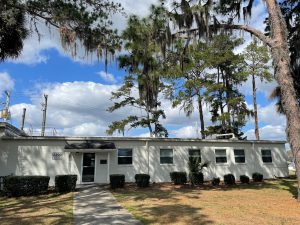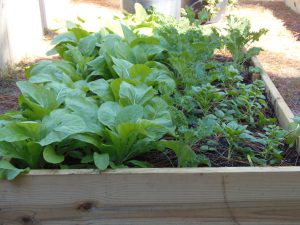
Inside a squat, unassuming concrete block building on a bend in the road at the edge of the University of Florida campus, the secrets of a million mysteries are unlocked. What is in this powerful little building, you wonder? The IFAS Extension soil testing lab. Every spring, Florida residents trying to figure out how to fertilize their lawn are directed to their local county Extension office to get a soil test kit.

Soil tests are the best tool available for understanding nutrient (nitrogen, phosphorus, potassium, etc.) levels and pH readings for home landscapes and gardens. Extremes of any of these numbers can be the difference in growing something amazing or having constant problems. As Extension Agents travel to campus for meetings, we make the pilgrimage to the soil testing lab to pick up little paper sacks and pre-printed instruction guides for taking soil samples. We stock these at the local office and distribute them by the hundreds to visitors interested in understanding how to best care for their landscapes.

Once a soil sample is taken, it should be shipped directly to that little lab on campus. After analysis, a report is produced and sent to the homeowner, with a copy to the local Extension office. So, if you need help interpreting the results of the report, you can call your county Extension office for assistance.

Taking a soil sample is easy. We have printed instructions at the office, but step-by-step guidelines are also available online. Ideally, you will take about a dozen small samples from the top 2-4″ of different parts of a landscape, then mix them. At least a half pint of dry soil is needed for a good sample. Each type of plant being grown in the soil–whether turfgrass or vegetable–has a “crop code,” which is important to include since the plants have specific growing needs. While lab services are not free, they are extremely affordable. A pH test with lime requirements is only $3, while a pH and nutrient test is just $10. Happy gardening!
 6
6
